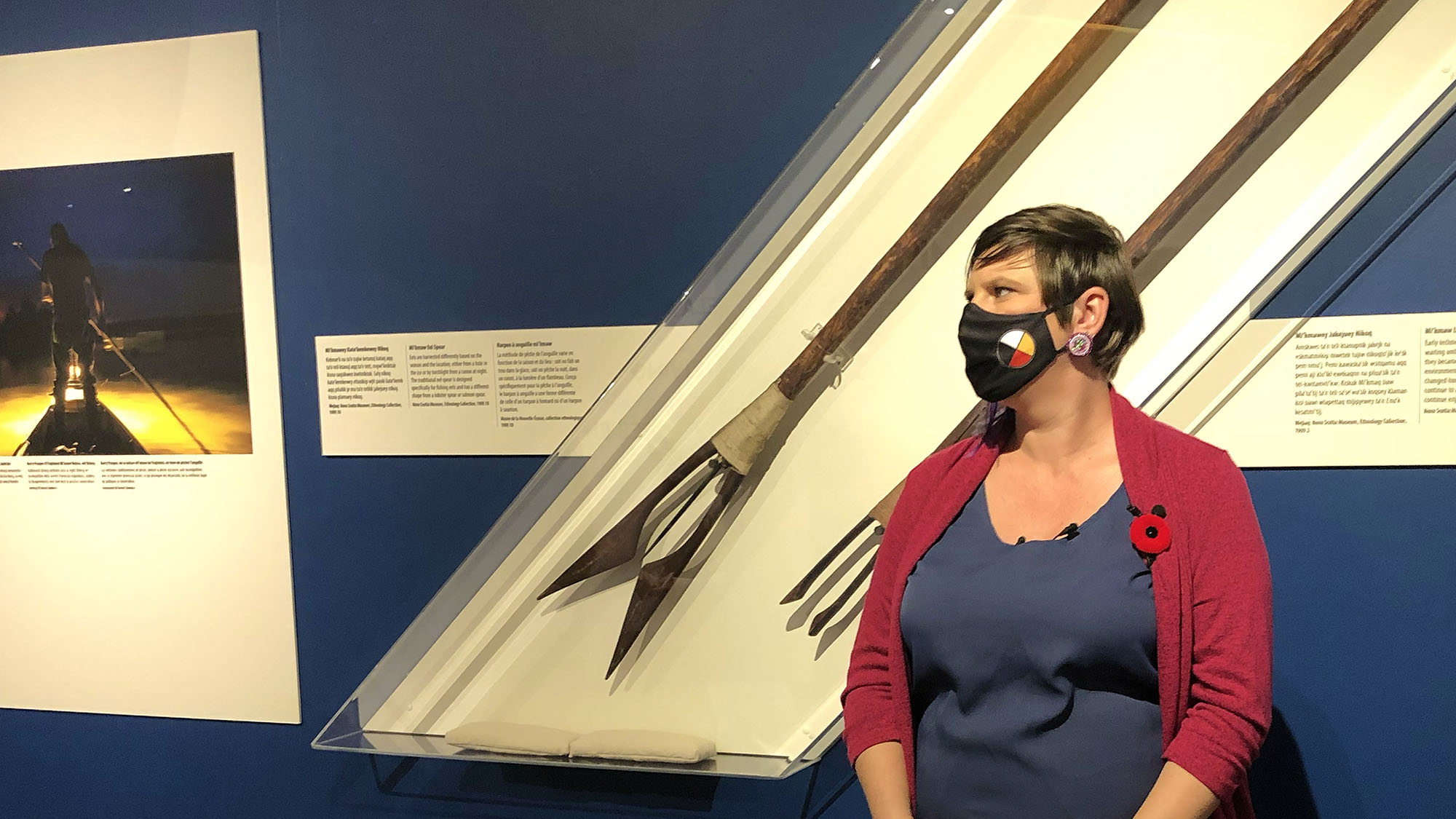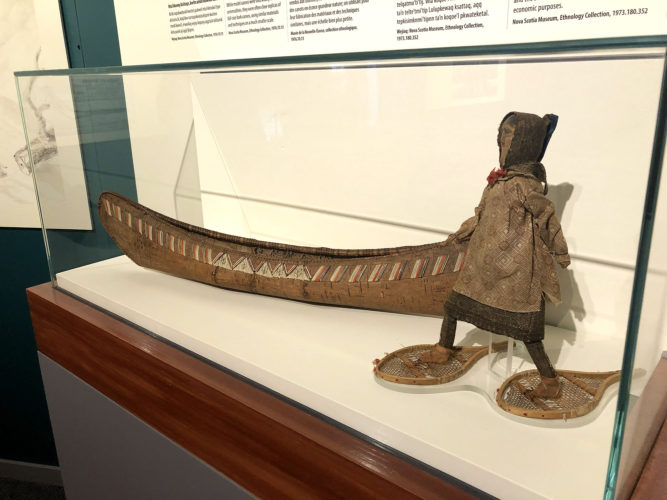Mi’kmaw curator inspires cultural pride with new exhibit at Halifax museum
Exhibit in Mi’kmaw, English and French on display through 2023

caption
Guest curator Salina Kemp stands beside a display at the Maritime Museum of the Atlantic's new exhibit called Ta’n me’j Tel-keknuo’ltiekA new exhibit at the Maritime Museum of the Atlantic aims to embrace the history and culture of Mi’kmaw people from past to present.
Guest curator Salina Kemp called it a “dream come true.”
“I am absolutely delighted with the way that this turned out,” she said at the exhibit’s launch on Tuesday.
The exhibit is called Ta’n me’j Tel-keknuo’ltiek, or How Unique We Still Are. It celebrates the relationship between the Mi’kmaq and their traditional territory of Mi’kma’ki through its people, artifacts and artwork.
The exhibit opens with a looped projection of a forest and river, meant to highlight the Mi’kmaq’s connection to land and water.
Other aspects of Mi’kmaw life featured include traditional canoes and panels on water protectors, environmental issues and economic participation.

caption
Visitors can trace a petroglyph of the Mi’kmaq eight-pointed star.The museum developed Ta’n me’j Tel-keknuo’ltiek as a temporary exhibit to coincide with the North American Indigenous Games, which are set to take place in Halifax in 2023.
Co-curator Amber Laurie said she hopes the displays will leave visitors thinking about Mi’kmaw culture and the treaty relationship between the Mi’kmaq and settlers.
“In the centre of the exhibit we have a spot where you can take a moment to reflect on what it means to be treaty people … I think that is something that will help us move closer to reconciliation,” she said.
Kemp spoke about what the exhibit meant to her as a Mi’kmaw person growing up in Halifax. She said she hopes Mi’kmaw youth can take away a sense of cultural pride and knowledge — something she was missing as a youth.
“When I was going to school there was not a large amount of representation about Indigenous culture. And more especially, there was almost no representation of Mi’kmaw culture. Often when there was representation it very much placed us in the past,” she said.

caption
A hand carved wooden doll in snowshoes from the late 19th century stands beside a miniature canoe.Kemp said the purpose of the exhibit is to show how Mi’kmaw culture holds strong into the present despite attempts by settler society to erase it.
“This exhibit provides viewers with the opportunity to learn about the Mi’kmaq, not only of the past but the Mi’kmaq of today. And talk about the many ways that we continue to be uniquely Mi’kmaq,” she said.

